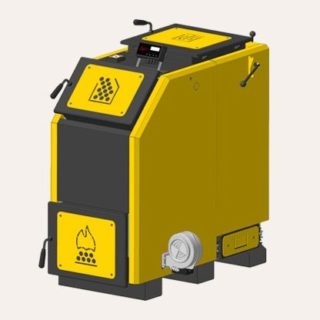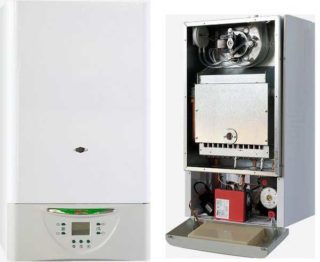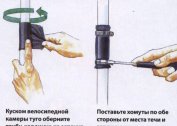Among the samples of gas-fired boiler equipment presented on the domestic market, units stand out under the brand name Danko (Ukraine). To get a complete picture of this model, an interested user will need to get acquainted with the main characteristics and design features. It is also important to deal with existing varieties of units that fully characterize the Danko gas boiler as a universal device.
Pros and cons of gas boilers Danko
The advantages of these units include:
- use of advanced technologies and high-quality components;
- long service life of equipment;
- economical fuel consumption and noiseless operation;
- relatively low cost of the product.
The advantage of the boilers of this series is also considered their compactness and attractive appearance. Like most natural gas heating units, Danko products have characteristic flaws.
- It is necessary to periodically service the unit, be sure to clean the chimney.
- During operation, the flame may die out due to external factors.
- Wall-mounted Danko models have power limitations, while floor-standing models are characterized by increased noise levels.
These disadvantages do not have a significant impact on the overall assessment of the purchased equipment. As criteria for choosing the right model, technical indicators are usually used. Among them, the following factors stand out:
- average gas consumption for the allotted period of time;
- method of placement;
- energy efficiency;
- functionality and warranty period.
Often, the equipment criteria for the indicator of the heated area are added to these criteria.
Specifications
The technical characteristics of Danko boilers include:
- type of combustion chamber - turbocharged or atmospheric;
- average fuel consumption does not exceed 1.9-2.7 m3 / hour;
- Efficiency - 92%;
- heating area - from 70 to 300 meters;
- power supply 220 Volt 50 Hertz.
The same indicators include a set of additional functions available for each specific model.
Boiler device
Gas boilers “Danko” are manufactured according to standard schemes, according to which its main components are a heat exchanger and a burner, combined into a common unit. Also in the design of the device, the following modules and operating units are provided:
- circulation pump;
- second level plate heat exchanger;
- turbofan in forced air models;
- three-way valve;
- control electronic module.
When the boiler is operating, water first enters the main heat exchanger and is heated there, and then it is transferred to a plate-type exchange module, heating it to the desired temperature. After this, the coolant enters the three-way valve, where it continues to heat up, and then is discharged into the heating circuit in order to go to the next round of circulation.
The system is controlled by a control module, which is installed in volatile boilers. In non-volatile parapet models, this function is performed by mechanical sensors and special valves. The pump built into the system is responsible for the circulation of the fluid, air is supplied to it due to natural draft or forcedly by means of a turbofan.
Varieties of Danko boilers
Danko boilers in the heating equipment market are represented by a large assortment of models that differ in the following ways:
- according to the type of installation within the premises they have floor, wall or parapet execution;
- according to their functionality, they are divided into single-circuit and dual-circuit systems;
- as a combustion chamber, there are open or atmospheric and closed (turbocharged) types.
Danko floor gas boilers for heating a private house are installed on a special stand made of non-combustible material or directly on the floor. For their wall-mounted counterparts, a hinged installation using metal supporting structures (ramps) mounted on load-bearing walls is provided. Parapet samples of boilers belong to products with a hinged type of installation. They differ from wall models in the way they connect to the chimney. In addition, this difference is caused by the need to create a slope of the pipelines of the heating system, which provides natural circulation of the coolant.
Single-circuit units are intended only for heating the liquid and transferring it to the heating network. Double-circuit systems simultaneously heat the coolant and prepare hot water used for domestic needs. The combustion chamber has the following differences:
- In open (atmospheric) models, in order to obtain normal combustion, air is taken directly from the room in which the boiler is mounted. Combustion waste together with smoke is removed naturally, due to the draft pressure drop generated.
- In closed-type units, air enters the system, and smoke is removed from it through a powerful turbocharger fan.
Turbocharged units are much more stable in operation than conventional ones. The reason is the high pressure under which the fuel is supplied to the burner. The flame in it is more stable and does not die out due to drafts or strong gusts of wind.
From the point of view of the reliability of the boiler unit, users may be interested in models with a steel or cast-iron heat exchanger. In addition, it is possible to select samples with different configurations of control systems.
Popular models
Floor models of Danko brand boilers are presented in the following series:
- Danko-10 with a capacity of 10 kW are designed for heating and domestic hot water, they need a chimney.
- SR or HRV belong to single and double-circuit samples with a declared power of 8 to 24 kW. Equipped with metal heat exchangers with a wall thickness of 3 mm.
- CH and BCH are units with increased power from 30 to 48 kW with the same steel heat exchanger.
- Rivneterm belongs to a series of ultra high power units and is designed for heating large areas.
The latest models are represented by single and double-circuit boilers with declared power from 30 to 96 kW, having a steel heat exchanger and capable of heating rooms up to 900 m2.
A series of wall-mounted boilers from the same manufacturer includes products with the indexes of US and UVS - single and double-circuit boilers with a capacity of 7 to 18 kW. They have the same steel heat exchanger with three millimeter walls. Floor-standing boilers with a capacity of 16-50 kW, equipped with a cast-iron heat exchanger, are presented in a separate series. They have large dimensions and weight, which is explained by other sizes of individual units and assemblies.
Cost and completeness
The cost of Danko boilers is determined by the type of design, its functional capabilities and ranges from 8 to 109 thousand rubles. The chimney and other components are traditionally not included in the package of delivery.Each series of products is distinguished by its complete set, so before buying the user will need to clarify its composition and purchase the missing items.
The following sets are common on the domestic market of components for such boilers:
- A set of parts from the company Kare (Poland), manufactured specifically for Danko: valves, thermostat, gearbox and a set of pressure and traction sensors.
- A selection of accessories from Honeywell (USA): electromechanical feed control units installed in especially “advanced” models.
- Components from Sit (Italy): automatic components used in European-made gas boiler models.
The range of products themselves and components for them is very wide. The user can always choose the best option based on the specific conditions of their operation.
Operational Features and Settings
The requirements are set out in the user manual, which should be carefully studied before working with the unit. During the operation of boilers, the following unforeseen situations are possible:
- The product does not turn on.
- The boiler starts to shut down arbitrarily.
- With strong drafts, the burner may fade.
- Draft decreases markedly (for products with natural ventilation).
Specialists should be invited to resolve the first two faults. During operation, it is important to remember the need for periodic cleaning of the chimney, which is clogged with combustion waste over time.
The need for adjusting the functionality of the boiler may be required when it is necessary to increase the efficiency and stability of its operation. To do this, you will have to invite a specialist service center or representatives of the warranty workshop. Self-tuning can lead to a complete failure of the equipment.








